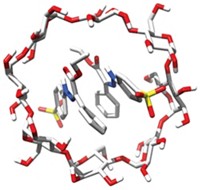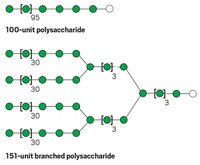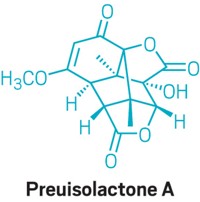Advertisement
Grab your lab coat. Let's get started
Welcome!
Welcome!
Create an account below to get 6 C&EN articles per month, receive newsletters and more - all free.
It seems this is your first time logging in online. Please enter the following information to continue.
As an ACS member you automatically get access to this site. All we need is few more details to create your reading experience.
Not you? Sign in with a different account.
Not you? Sign in with a different account.
ERROR 1
ERROR 1
ERROR 2
ERROR 2
ERROR 2
ERROR 2
ERROR 2
Password and Confirm password must match.
If you have an ACS member number, please enter it here so we can link this account to your membership. (optional)
ERROR 2
ACS values your privacy. By submitting your information, you are gaining access to C&EN and subscribing to our weekly newsletter. We use the information you provide to make your reading experience better, and we will never sell your data to third party members.
Synthesis
Cyclodextrins, reflected
Mirror-image sugar rings sweeten supramolecular chemistry
by Bethany Halford
April 3, 2024
Chemists love to tinker with cyclodextrins (CDs)—macrocyclic daisy chains of glucose molecules that feature a hydrophobic core surrounded by a hydrophilic exterior. They’ve been used to encapsulate drugs, in air fresheners to sop up smelly molecules, and in water purification systems to capture and destroy micropollutants.

Now, more than 130 years after their discovery, CDs are finally getting a glimpse of their mirror image. For the first time, chemists have synthesized L-CDs using the unnatural sugar L-glucose.
University of Hong Kong’s J. Fraser Stoddart led the work. His team created 500 mg quantities of α-, β-, and γ-L-cyclodextrins, which have 6, 7, and 8 sugar units, respectively, via synthetic routes of 8 steps or fewer (Nat. Synth. 2024, DOI: 10.1038/s44160-024-00495-8).
“We think it’s a fundamental addition to the cyclodextrin toolbox. It may take time for us to see some really unique applications,” says Yong Wu, a postdoctoral scholar in Stoddart’s lab and the paper’s first author.
Because the mirror-image CDs have unnatural stereochemistry, they might be more challenging for enzymes to break down, making them useful in some drug-delivery applications. The L-CDs could also be a boon for enantioselective catalysis, says Matthieu Sollogoub, who studies supramolecular chemistry at the Sorbonne University and was not involved in the research. “We will finally be able to address the perennial question: ‘What if I want to synthesize the other enantiomer?’ Our answer now is simple: use the mirror-image cyclodextrin!” he says in an email.
Sophie R. Beeren, an expert in supramolecular chemistry at the Technical University of Denmark, who was also not involved in the work, calls the mirror-image CDs an important development. But she notes that the starting materials for the synthesis are expensive, and the synthesis is more complicated than that of the D-CDs. “The reason D-CDs are so widely applied in a range of industries is that they are cheap and readily available because they are produced enzymatically directly from starch,” she says in an email. “It remains to be seen,” she says, if L-CDs can “reach beyond the confines of academic research.”





Join the conversation
Contact the reporter
Submit a Letter to the Editor for publication
Engage with us on Twitter